Master Kitesurfing Flips: Essential Tips and Techniques
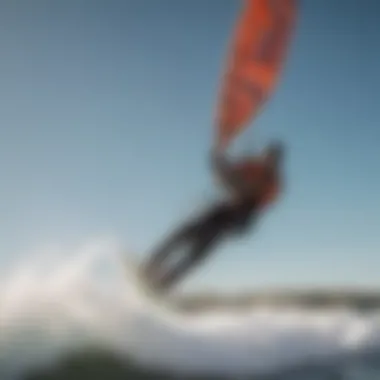
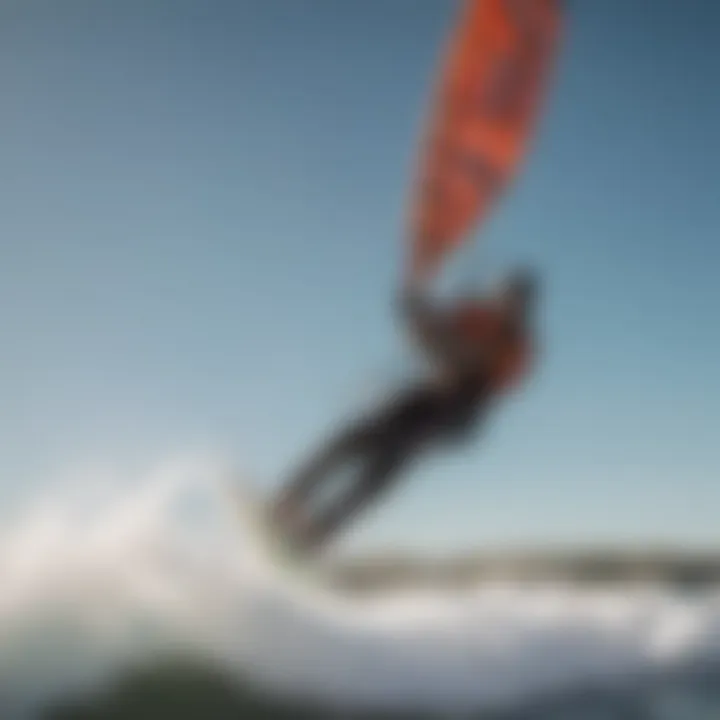
Intro
Kitesurfing is a thrilling blend of skill, adventure, and finesse. However, for many, the art of flipping adds an exciting layer to this ride. Mastering flips is not merely about throwing yourself into the air; it's about understanding the interplay between your body, the kite, and the board. Riding smoothly is great, but flipping—doing it with style—takes your skills to an entirely new echelon.
In this guide, we'll take a closer look at essential flip techniques while also discussing gear and safety measures. Whether you’re just starting or you’ve been riding waves for a while, grasping these concepts will surely boost your confidence the next time you’re out on the water.
Equipment Reviews
When it comes to kitesurfing, having the right equipment can make or break your performance, especially for flipping. Let’s discuss what gear will enable you to maximize your flipping potential.
Kites: Choosing the Right Model
Your kite plays a pivotal role in how you execute flips. Not all kites are alike. Here’s a breakdown of some recent innovations:
- Kite Shapes: Modern kites typically come in three shapes: C-shaped, bow, and delta. Each offers distinct flying characteristics.
- Sizes: Depending on your weight and wind conditions, kite size can differ considerably. Larger kites will add more lift, which is essential for flips.
- Materials: Today's kites use materials like rip-stop nylon or polyester, minimizing weight while maximizing durability. This is crucial for maintaining control in tricky maneuvers like flips.
- Brands: Popular options like North Kiteboarding, Ozone, and F-One have models specifically designed for freestyle maneuvers.
Choosing the right kite can tip the scales dramatically in your favor when you’re working on those flips.
Boards: Find Your Perfect Fit
Board selection is just as important as your kite. Here’s a quick overview of what to look for:
- Twintip Boards: Ideal for flips due to their stability and symmetrical design, twintips help any rider land smoothly after a trick.
- Directional Boards: These are typically used for wave riding but can also be handy for performing flips if you’re looking for speed.
- Design and Construction: Materials such as fiberglass or carbon fiber provide varying degrees of flex and responsiveness. If you’re pursuing big air flips, opt for a stiffer board that can handle the pressure.
Accessories: The Unsung Heroes
Small details often make a large difference. Essential accessories include:
- Harnesses: Your harness connects you to the kite, so it should fit well—not too tight, not too loose. A poor fit can hinder your ability to stabilize during a flip.
- Lines: Sturdy lines are critical—they impact how your kite responds while in the air. Look for options branded for robustness and longevity.
- Safety Gear: A helmet and impact vest can mitigate risks associated with flips. Accidents happen, so it’s better to be safe than sorry.
The End
In sum, kitesurfing flips require the right gear and understanding of techniques to avoid common pitfalls. Every flip is a learning opportunity, and committing to practice while being mindful of your equipment will set you on a trajectory toward greater heights—literally. Master these elements, and you'll elevate not just your skills, but also the entire kitesurfing experience.
Understanding the Fundamentals of Kitesurfing
Kitesurfing is more than just a sport; it’s a blend of balance, agility, and technique that can take years to master. Understanding the fundamentals not only sets the stage for safe practices but also enhances overall performance. It’s like learning to walk before you can run.
The Importance of Technique
In kitesurfing, technique is akin to the foundation of a house. Without a sturdy base, everything else is shaky. The way you position your body, handle the kite, and communicate with the wind is crucial.
Getting the technique right means that you’ll be able to perform flips and tricks with precision rather than hacking away. Bad technique can lead to injuries or mishaps that can sometimes overshadow the joy of the sport. A solid understanding of your body movements and how they interact with the kite can significantly lower the risk of accidents.
Additionally, the right techniques will help you conserve energy. When you don’t have to fight the wind or your own mechanics, you can ride longer and catch more waves. Knowing proper technique can also make your kitesurfing experience more enjoyable, allowing you to focus on the thrill rather than straining against the elements.
Key Terminology in Kitesurfing
Familiarizing yourself with the lingo of kitesurfing is equally important. Knowing the terms is like having a map; it guides you through the complexities of the sport. Here are a few key terms to keep in mind:
- Kite Control: This refers to how well you can maneuver the kite in the air to generate speed and lift; it’s critical for executing flips and tricks.
- Wind Window: This is the area in which you can safely fly your kite. Understanding this helps you position yourself for optimal performance.
- Edge Control: This is about managing your board on the water’s surface. A good edge allows you to carve and build up speed for jumps.
- Drop-in: The act of entering the water before catching a wave; it’s essential for timing your maneuvers.
Leverage these terms in conversations with fellow kitesurfers. It can help build camaraderie and enhance learning experiences. A shared vocabulary is key for effective communication—especially when beginners are trying to learn from others.
Overall, mastering these fundamentals and key terms will provide a strong foundation for your kitesurfing journey, setting you up for more advanced techniques, including those exhilarating flips. Learning the ropes will not only increase your skill level but also create a deeper connection with the sport. Always remember, each wave is a new opportunity for experience and growth.
"Kitesurfing is not just a sport; it’s an expression of freedom in nature".
Intro to Kitesurfing Flips
Kitesurfing flips represent a significant leap in the world of board-riding. This acrobatic maneuver not only enhances a rider's style but also showcases their ability to harness the wind and water. When executed correctly, flips can be mesmerizing – both to perform and to watch. It's about more than just making a splash; it’s about refining one’s skills and understanding the symbiotic relationship between the kite and the board.
Flipping, particularly in kitesurfing, requires a solid foundation of technique and a keen sense of timing. Riders who aspire to elevate their game must recognize that flips are not just tricks; they are statements about a kitesurfer's prowess. Successfully landing a flip demands precision, practice, and an understanding of how various elements, including body positioning and kite handling, intertwine to create harmony in the air.
What is a Flip?
A flip in kitesurfing is an aerial maneuver where the rider rotates the board and body while airborne. Think of it like a gymnast flipping off a pommel horse, but with the rough and tumble of water below. It's the act of transforming a simple jump into an exhilarating spin in midair, which can vastly improve a rider's performance and confidence.
Flips can be categorized in various ways, but they all share the fundamental goal of maneuvering through the air with style. Here’s a breakdown to illustrate:
- Forward Flip: The rider rotates forward while in the air.
- Backflip: Opposite of the forward flip, this one has the rider twisting backward.
- Blind Flip: Involves a twist that hides the descent from the rider's view, requiring a higher level of skill.
Understanding flips helps kitesurfers set a foundation for more complex tricks. It's not just about doing them; it’s a gradual process of integrating these flips into a rider’s style, making them a staple in their repertoire. As kitesurfers hone these flips, they position themselves not just as participants in the sport, but as artists, creating their own unique expressions on the waves.
Types of Flips in Kitesurfing
Understanding different types of flips is crucial for kitesurfers looking to elevate their skills and performance. Each flip brings a unique flair and maneuverability to the rider's repertoire. Not only do flips add style and excitement, but they also enhance overall control on the water. By distinguishing between various flips, riders can choose the techniques that best suit their skills and comfort levels. Mastery of these flips requires dedication and practice, but the payoff in terms of enjoyment and visibility within the community can be well worth the effort.
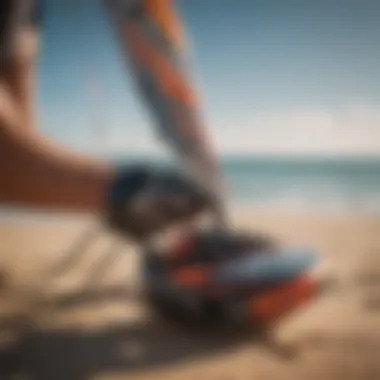
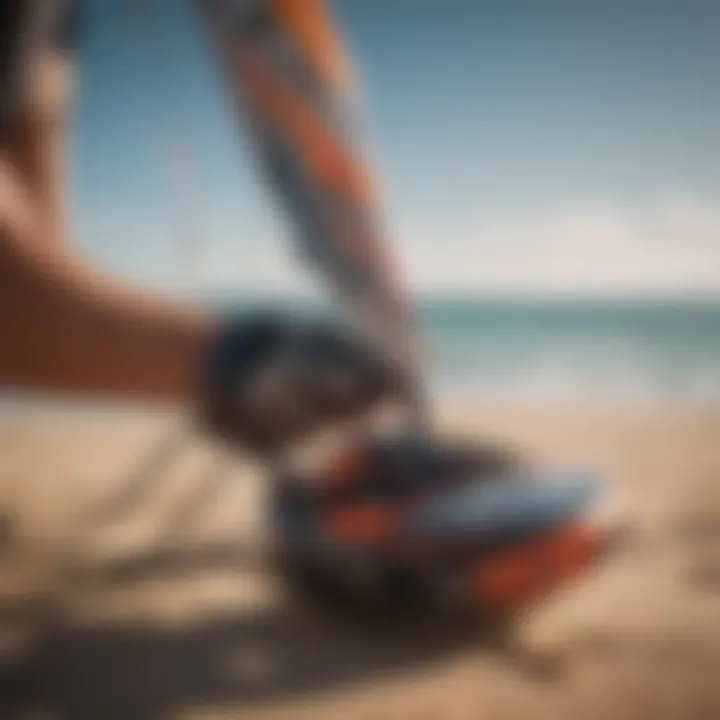
Forward Flips
The forward flip is often seen as a rite of passage for many kitesurfers. This maneuver is characterized by a rotation in a forward motion, where the rider launches off the water’s surface, spins forward, and lands back down. It starts with gaining enough speed and height through a powerful edge and pop off the wave. Achieving the right body positioning is essential—bending the knees and keeping the shoulders aligned with the board ensures a smooth rotation.
Benefits:
- Dynamic Movement: Forward flips add a mix of energy and agility to your kitesurfing.
- Visibility: Executing this flip correctly will surely catch the attention of fellow riders and spectators.
A common mistake is to launch too early or backward, which can result in awkward landings. It’s essential to focus on timing and be aware of the kite’s position. A forward flip with a proper kite angle can give the rider a clear advantage by maximizing lift when combined with a gust of wind.
Backflips
Backflips are a favorite for many, providing a dramatic aesthetic as the rider flips backward. While it may seem daunting for beginners, mastering this flip offers a tremendous sense of achievement. Proper body position is key; the rider should lean back as they take off, allowing gravity to assist with the spin.
Key Aspects:
- Spinning Motion: The rider should initiate the flip by pulling on the back hand to create rotation.
- Landing Control: It’s vital to spot your landing—a skill that comes with practice.
The backflip is particularly advantageous when it comes to tricks involving grabs or spins, making it a versatile addition to a rider's skillset. Practicing this flip in various water conditions helps build confidence and improve technique.
Blind Flips
Blind flips stand out due to the unique challenge they present. In this flip, riders rotate 360 degrees backward while keeping their eyes off the landing spot. This makes it one of the more difficult flips but also one of the most rewarding when successfully executed. Riders must trust their muscle memory and rely on feeling the rotation rather than spotting its completion.
Considerations:
- Mental Fortitude: Confidence plays an enormous role; attempting a blind flip can invite apprehension, but overcoming it enhances overall performance.
- Kite Positioning: Proper kite control is crucial; maintain a higher position to ensure sufficient lift throughout the trick.
Blind flips are not only technical but rewarding, as they demonstrate a rider's skill and confidence. Practicing this flip should be done cautiously, starting small and gradually increasing the height and difficulty as comfort grows.
“Mastering flips in kitesurfing isn't just about the trick; it's about how you feel on the water. Keep pushing your limits.”
In summary, understanding and mastering these various flips offers kitesurfers the opportunity to expand their skill set dramatically. Each flip comes with its own set of challenges and rewards, and developing proficiency in them paves the way for more advanced kitesurfing maneuvers.
Essential Equipment for Executing Flips
When it comes to kitesurfing flips, the right equipment can make or break your experience on the water. Selecting appropriate gear is crucial, as it directly influences performance, safety, and your overall ability to execute tricks smoothy. In this section, we'll dive into the specific elements that every rider should consider when gearing up for flips, helping you elevate your skills and confidence in the water.
Choosing the Right Kite
The kite you choose is like picking the right brush for a painting. Each kite has its own style, characteristics, and performance capabilities. For flips, it’s vital to select a kite that offers good lift and stable handling. What does that mean exactly? Look for kites designed for freestyle or wave riding, typically known for having more power in the air.
Keep in mind the wind conditions as well. A smaller kite may be advantageous in high winds, while a larger kite could give you that extra boost in lighter breezes. As you check the specs, don’t forget the importance of the kite's aspect ratio too. Higher aspect ratio kites provide more upwind drive, which can help in setting you up for a solid take-off.
Optimal Board Selection
Just like the kite, your board plays a vital role in executing flips. The right board will not only affect your speed but will also influence your balance while in the air. Seek boards that are designed specifically for freestyle tricks or offers a good pop. Often, a board with a stiffer flex and a smaller size allows for better responsiveness, making it easier to initiate flips.
While selecting
- Directional boards can be great for beginners, they might limit your ability to spin.
- Twin-tips, on the other hand, provide versatility, allowing you to land switch and execute flips effortlessly.
Also, take a moment to consider your footstraps. A secure fit ensures you won't accidentally lose your footing mid-flip, enhancing your overall control.
Wetsuits and Safety Gear
Never underestimate the importance of wearing a good wetsuit. Not only does it keep you warm in chilly water, but a quality wetsuit can also provide buoyancy, which aids in staying afloat after a flip. The thickness of the wetsuit varies according to the temperature of the water, so you should find one that suits your local conditions.
As for safety gear, never leave the beach without a decent helmet and impact vest. These items can prevent injuries during falls or mishaps during flips, keeping your head protected and your body cushioned. You'd be surprised how effective these can be, considering that even seasoned riders find themselves in sticky situations.
"Safety first, because while you might master the flip, you gotta keep your body intact for more sessions to come!"
Before you hit the waves, double-check all your gear. Ensure everything is in working order, from kite lines to board fins. A little precaution can save you from potential troubles while flipping through the air. By equipping yourself properly, you'll position yourself for success and enjoyment in your kitesurfing journey.
Techniques for Mastering Flips
Understanding the nuances of kitesurfing flips is not merely about the flashy moves; it’s about the right techniques that enhance a rider's overall capability on the water. Mastering flips can elevate your performance exponentially but requires a firm grasp of several critical elements. This section dissects the crucial components that contribute to effective flipping, highlighting how these techniques can be the difference between a successful maneuver and an unfortunate fall.
Body Positioning and Control
The key to a flawless flip starts with body positioning. Riders must keep their body centered over the board as they launch into the flip. This stability is essential; think of it like balancing a tightrope walker. If your weight shifts unexpectedly, it can throw off the entire flip. Engage your core muscles while keeping your arms relaxed at your sides. This not only aids balance but also facilitates the controlled movements necessary to land successfully.
You'll want to bend your knees slightly, which can help absorb the impact upon landing. Here’s a practical tip: keep your head up and your eyes focused on the landing spot instead of looking down. By maintaining this upward gaze, you'll instinctively brace your body for the landing and increase your chance of remaining upright.
Timing and Kite Handling
Timing is the heartbeat of kitesurfing flips. When you approach a flip, it’s critical to gauge the pull of the kite and initiate your jump at the right moment. The golden rule here? Don’t rush it. Too often, riders mistakenly try to flip before their kite is positioned correctly. Start with the kite low, around a 45-degree angle. This provides just the right amount of lift as you take off.
To make things clearer, here are some pointers on timing:
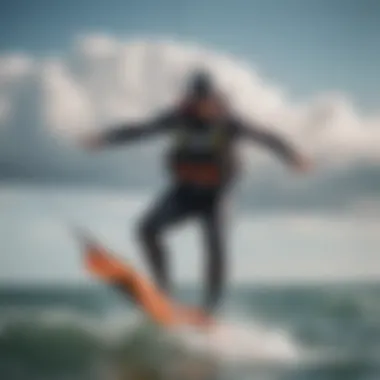
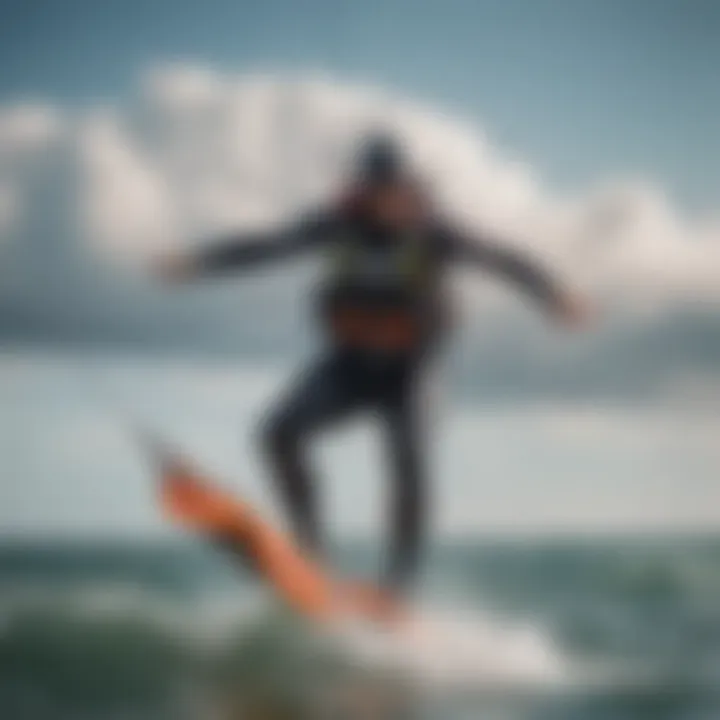
- Observe the Wind Conditions: Wind strength and direction affect how you should handle the kite during the flip.
- Practice the Pop: Use your back leg to kick off the tail of the board, which propels you into the air.
- Kite Control: As you're flipping, keep the kite hovered high to assist with the rotation. This will give you an upward thrust, making it easier to complete the flip gracefully.
Using the Wind to Your Advantage
Another area where some kitesurfers stumble is in recognizing how to use the wind effectively. The wind isn't merely a backdrop; it is a powerful ally when performing flips. First, understand that the angle of the kite needs to align with the wind direction for optimal lift. When you head into the wind slightly, the kite generates more power, helping you gain altitude.
A strategic approach to flipping involves the following:
- Bend with the Wind: Lean back into the wind as you perform the flip. This action helps control your rotation and provides stability during the maneuver.
- Adjust Kite Position: After launching, slightly pull on the back hand to keep the kite higher. This lets you maintain that crucial lift.
- Follow Through: Always prepare for the next motion after the flip; the wind will be your guide. Ensure to have a landing plan by keeping your body aligned with the wind as you descend.
"Mastering the essence of flips in kitesurfing transcends mere technique; it embraces the intricate dance between a rider, their kite, and the ever-changing nature of the wind."
By honing these techniques, kitesurfers can gain mastery over their flips, transforming a daunting task into an exhilarating display of skill. Everything becomes interconnected, from body positioning to timing and wind utilization. With consistent practice, riders can expect noticeable improvement, which will surely boost their confidence and performance on the water.
Safety Considerations While Flipping
When it comes to kitesurfing flips, everyone's gung-ho about pulling off those jaw-dropping aerial maneuvers. However, flipping isn't just about the daring and thrill; it involves serious safety considerations that can’t be overlooked. Understanding these elements is crucial not only for your safety but also for maximizing your enjoyment on the water. The key is to be proactive rather than reactive. You don't want to play catch-up after a mishap.
Evaluating Conditions
Before you even think about attempting a flip, it’s essential to evaluate the conditions of the water and wind. The term "check your wind" is much more than a slogan; it's a golden rule. Too much wind? You might be setting yourself up for a wild ride. Too little? Your flip might end up looking more like a belly flop.
Here are some factors to consider:
- Wind Speed: Ideally, you want to aim for wind conditions that suit your skill level. For most flips, a steady wind between 12 to 20 knots should do the trick.
- Water State: Flat water is your best friend when flipping. Choppy seas can throw off your takeoff and landing.
- Weather Changes: Keep an eye on the sky. Sudden storms can whip up winds unpredictably, making even the simplest moves hazardous.
Always remember, it's better to delay a flip session than to rush into danger.
Understanding Potential Hazards
The ocean can be unpredictable, and there are hazards that can complicate your flipping endeavors. Here’s a rundown of some potential pitfalls:
- Obstacles: Watch for buoys, rocks, or any debris in the water that could ruin your day and lead to injuries. Your eyes are as important as your kite skills; use them wisely.
- Other Riders: Not everyone has the same skill level, and collisions are all too common in crowded spots. Always stay aware of your surroundings to avoid ending up in knots with another rider.
- Equipment Issues: Be sure to inspect your gear regularly. A small tear in a kite or a loose strap can be the difference between a flawless flip and a trip to the hospital.
"Safety is not just a concept; it's a way of life on the water that protects you and your fellow riders."
Adopting good habits form the groundwork for a successful kitesurfing experience. It’s not about avoiding challenges, but about confronting them intelligently and prepared. By being aware and cautious, you'll not only be safer but also more confident in your abilities to perform those thrilling flips.
Common Mistakes While Attempting Flips
When it comes to kitesurfing flips, the difference between a graceful flight and an awkward splash often boils down to technique. Understanding common mistakes can fast-track your learning process and elevate your performances on the water. This section delves into pitfalls that riders frequently encounter, examining how to sidestep them for a more successful and enjoyable experience.
Poor Takeoff Techniques
One of the primary issues that can derail a flip attempt is insufficient takeoff technique. The moment before you leave the water is crucial. A weak takeoff can lead to a myriad of negative outcomes—like landing awkwardly or failing to complete the flip altogether. Many riders tend to lean too far back or fail to generate enough speed, which can compromise their lift. More often than not, riders neglect the importance of their pop; they need to bring their knees towards their chest and kick off the board. This motion gives the momentum needed to launch into the air.
Here are some specific elements to consider for a more effective takeoff:
- Speed: Ensure you have enough speed before attempting the flip. Too slow and you won’t get the height you need.
- Body Positioning: Keep your core engaged and your weight centered over the board.
- Kite Angle: Make sure your kite is positioned correctly; too low can hinder your lift.
Practicing your takeoff in simpler jumps can provide a solid foundation. Remember, a great takeoff serves as the launchpad for all your tricks.
Inadequate Landing Approach
Landing can be just as complicated as the flip itself, yet it’s often overlooked. Riders might perfectly execute the flip but find themselves crashing down due to a poor landing approach. An improper landing can not only lead to injury but can also discourage you from attempting flips in the future.
Here are critical aspects to think about:
- Kite Position: Ensure your kite is angled appropriately to provide lift during the landing phase. A kite that’s too low can send you crashing.
- Flexibility in Knees: As you prepare to land, keep your knees bent to absorb the shock. Stiff legs can result in a jarring impact.
- Board Alignment: Make sure your board is level with the water; a tilted board can lead to wipeouts or falls.
Adjusting your approach to land, much like adjusting your takeoff, can turn a flip from an amusing trial into a display of skill.
"A well-executed flip is not merely about aerial finesse; it begins and ends with your transitions and control throughout the maneuver."
In summary, avoiding these common mistakes—focusing on strong takeoff techniques and precise landing—will enhance your kitesurfing flips significantly. Keep the tips mentioned here in mind, and you’ll find yourself soaring higher and landing smoother, ultimately mastering the art of flipping.
The Psychology of Flipping
The act of flipping on a kiteboard is not solely a physical endeavor, but a mental one as well. Understanding the psychology behind flipping is crucial because it helps riders navigate the hurdles of fear, anxiety, and self-doubt that can crop up when attempting advanced maneuvers.
In kitesurfing, where the stakes involve not just skill but also safety, maintaining a sound mental state can significantly influence performance. Mastery over one's thoughts and feelings can lead to improved execution of flips, which is what riders are ultimately after. Here we’ll explore the importance of overcoming fear and anxiety, as well as mental preparation techniques that can pave the path to success on the water.
Overcoming Fear and Anxiety
Every kitesurfer, regardless of their level, faces the specter of fear. It’s normal to feel a knot in your stomach when attempting flips for the first time. Recognizing that this fear is not unique can help. Surfers often share stories of their own fears, creating a sense of community. To manage this stress, techniques such as visualizing successful flips before executing them can work wonders. When you picture yourself landing smoothly, your brain starts to internalize that outcome, replacing anxiety with confidence.
Another method is to break down the flip movement into manageable parts instead of viewing it as a whole complicated maneuver. This incremental approach makes the task seem less daunting. Moreover, practicing in controlled environments, such as smaller waves or lighter winds, can minimize risks and foster a sense of security. For instance, getting comfortable with one aspect at a time—whether it’s the takeoff or the landing—can desensitize riders to the fear of the unknown.
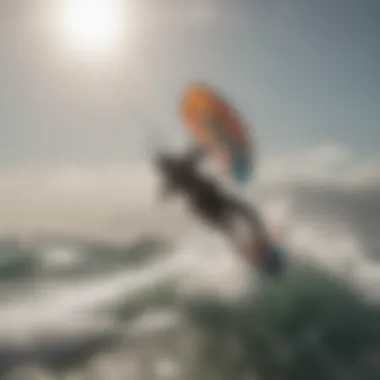

Mental Preparation Techniques
Mental preparation serves as the backbone of every kitesurfer's toolbox. Similar to the way athletes use training routines, kitesurfers can benefit from establishing a pre-flip ritual. This may include breathing exercises that stabilize the mind and body before taking off. Deep, focused breathing not only calms nerves but also aids in regulating physical response. Additionally, developing a mantra—such as "focus and fly"—can provide encouragement when anxiety threatens to take over.
Jotting down personal goals and reflecting on achievements can also be extremely beneficial. When riders take time to acknowledge their progress, no matter how small, it reinforces a positive mindset. Not just focusing on the outcome but celebrating the steps taken can help to alleviate pressure. Here’s a simple approach to create your own mental preparation routine:
- Breathe and center yourself: Spend a few moments in deep breathing to calm your mind.
- Visualize success: Picture yourself completing the flip successfully from start to finish.
- Affirm your skills: Remind yourself of past achievements in kitesurfing.
- Start small: If a flip feels too big, focus on just the takeoff or landing.
- Review and adjust: After each session, think critically about what felt good and what didn’t.
"The mind is everything. What you think you become."
—Buddha
Through understanding the mental elements associated with flipping, kitesurfers can unlock new levels of performance. By tackling fear and arming themselves with mental techniques, they not only increase their skill level but also enhance the enjoyment of kitesurfing itself.
Practice and Progression
When it comes to kitesurfing, practice isn’t just a means to an end; it's the bread and butter of skill development. Progression relies heavily on regular and focused practice sessions. Riders must embrace it, understanding that each time they hit the water, they’re laying the groundwork for their next big leap forward.
Focusing on progression allows kitesurfers to break down seemingly complex flips into smaller, manageable skills. Start with the basics, like mastering balance and control on your board, then gradually incorporate flip techniques, making necessary adjustments along the way. This thoughtful approach can prevent overwhelm, and minimize frustrations that can come with learning. Plus, every time you practice, you're sharpening not just your flips but also your confidence.
Setting Realistic Goals
Setting targets that are not just lofty dreams but achievable milestones is key. For example, rather than aiming to land a perfect backflip on your first try, consider to focus on smaller objectives, like getting comfortable with the takeoff or finding the right moment to rotate. It’s kind of like in life; you wouldn’t run before you could walk.
To set effective goals:
- Clearly define your objectives: Instead of saying, "I want to flip better," frame it in a more precise context like, "I want to land my first forward flip within three months."
- Use the SMART criteria: Ensure your goals are Specific, Measurable, Achievable, Relevant, and Time-bound. This helps build accountability and offers a clear path forward.
- Track your progress: Keep a log of your sessions. Not only does it motivate to see how far you've come, but it can help identify areas needing focus.
Drills and Exercises for Improvement
In the realm of flips, complacency is your enemy. Engaging in exercises tailored to your skill set is vital for reinforcing what you learn. Here are some creative drills to enhance your flipping prowess:
- Pop Drills: Find a flat area, either on water or practice them on a trampoline, where you can get the feel of popping off the board. This can simulate the initial lift needed for a flip.
- Transition Turns: Regularly practice smooth transitions will help with body positioning. The better your transitions, the easier the flips will become.
- Visualize your flips: This may sound a bit far-fetched, but visualization can be powerful. Before heading to the water, take a few minutes to picture yourself successfully executing a flip. This mental exercise can strengthen muscle memory and prepare your mind for actual performance.
- Buddy System: Training with a friend can be immensely beneficial. They can provide you with instant feedback on your technique and encourage you when the going gets tough.
Remember: Progression is about patience and persistence. Each small success lays the path for the next, and flipping should be celebrated in all its forms. Don’t rush—enjoy your time on the water while you grow.
Ultimately, practice and progression are the cornerstones of mastering flips in kitesurfing. There's no shortcut around it. Put in the hours, foster that deliberate practice, and before long, you’ll be seeing improvements you never thought possible.
Advanced Techniques for Experienced Riders
Once you have grasped the basics of kitesurfing and honed your flipping skills, it’s time to delve into advanced techniques that elevate your performance and creativity on the water. This section focuses on how experienced kitesurfers can enhance their repertoire of tricks and refine their overall style. Mastering these techniques not only boosts confidence but also opens doors to new possibilities and variations in your kitesurfing journey.
Combining Flips with Other Tricks
Integrating flips with other maneuvers can significantly heighten your kitesurfing experience. Combining these tricks showcases a higher level of skill and control, attracting attention and respect from fellow enthusiasts. To achieve seamless transitions:
- Start Simple: Begin with pairing a forward flip with a grab or a rotation. This helps to build coordination. Each element should flow into the next, forming a cohesive trick.
- Kite Knowledge: Understanding how your kite reacts during flips plays a huge role. During a flip, keeping the kite in the right position ensures that you maintain lift and control.
- Practice in Stages: Break down the tricks into smaller segments. For instance, perfect the flip first, then gradually incorporate additional elements, such as spins or grabs, bit by bit.
- Video Feedback: Record your attempts and analyze them. It’s often easier to catch mistakes when you can view them from different angles. This can also help in refining your technique.
By continuously integrating different tricks with your flips, you not only diversify your skill set but also uncover unique sequences that can stand out in competitions or riding sessions.
Enhancing Style and Fluidity
In the world of kitesurfing, style is just as crucial as the tricks you perform. A stylish execution not only looks impressive but can often serve as a crowd-pleaser. Here are some ways to enhance your overall style and fluidity:
- Flow is Key: The transition between tricks should be smooth. Avoid abrupt stops; instead, maintain momentum. The more fluid your movements are, the more stylish you'll appear.
- Body Language: Your posture plays a significant part. Keep it relaxed but engaged. Throwing in smooth, deliberate movements can amplify your performance.
- Watch the Pros: Observe professionals and study their techniques. Proven kitesurfers often have signature moves that define their style. Take notes from their body movement and kite control.
- Experiment with Speed: Changing your speed during your flips and other tricks can create distinct dynamics and visual appeal. Experimentation often gives birth to new styles and variations.
"Style is an extension of skill. It’s not just about the trick you perform, but how you perform it that resonates with the audience."
As an experienced rider, the goal is to not only land your flips successfully but also make each one a masterpiece. Look to express your individuality through your technique, inspiring others in the community to up their game.
Inspiring Examples from the Kitesurfing Community
Kitesurfing is not just a sport; it’s a vibrant community overflowing with creativity and shared passion. When it comes to flipping techniques and refining one's skills, looking up to seasoned kitesurfers serves as a vital source of inspiration. Real-life examples often ignite the spark necessary for progress, keeping both beginners and seasoned athletes motivated.
To witness how flips can transform from simple maneuvers into spectacular displays of agility can profoundly encourage riders to push their limits. By studying the techniques of renowned kitesurfers, one learns not only the methods but also the mindset required to execute flips with aplomb. The community thrives on shared experiences and tricks, creating a culture of learning and admiration.
Additionally, notable figures within the kitesurfing realm often highlight the importance of dedication, rigorous practice, and the willingness to experiment. This norm encourages aspiring kitesurfers to embrace their journeys, cultivate patience, and appreciate every splash and tumble in the pursuit of perfection.
Notable Kitesurfers and Their Tricks
- Gisela Pulido: This Spanish sensation has commanded respect across the kitesurfing world. Known for her backflips, Gisela's effortless style showcases the intricate blend of skill and artistry.
- Reno Romeu: A Brazilian kitesurfer who’s been at it for years and often surprises spectators with his combination of blind flips and mobe moves. Reno focuses on body positioning and fluidity, turning every flip into a visual masterpiece.
- Bruna Kajiya: Another gem from Brazil, Bruna is lauded for her kite loop flips that challenge both the laws of physics and common expectation. Her daring approach inspires many riders to try new heights.
- Keahi de Aboitiz: Mixing traditional surfing with kitesurfing, Keahi often incorporates stylish flips into his performances. His seamless execution reflects a strong understanding of wave dynamics, inspiring surfers and kitesurfers alike.
"The only way to do great work is to love what you do." – Steve Jobs
Each example reveals unique traits and tricks that reveal how varied and simplistic flipping can be when approached with the right mindset. By engaging with the works and achievements of these riders, newcomers can cultivate their style while respecting the foundations laid by predecessors.
In summary, tapping into the stories of accomplished kitesurfers not only enriches one’s own practice but also fosters a deeper connection to the kitesurfing community. This shared knowledge empowers riders to carve their unique paths in the exhilarating world of kitesurfing flips.
Closure: Embracing the Flip
As we wrap up this in-depth exploration of kitesurfing flips, it’s vital to understand that embracing the flip is more than just a flashy trick in the sport; it represents a definitive moment of skill progression and personal achievement. The ability to execute flips not only enhances one's performance but also enriches the overall kitesurfing experience. The flips can serve as a bridge from basic maneuvers to advanced tricks, unlocking greater creative expression on the water.
The Journey of Skill Development
Skill in kitesurfing is rarely static. It evolves through practice and exposure to varied conditions. For those looking to master flips, several elements must be considered:
- Dedication to Practice: One cannot expect to flip gracefully without putting in the hours. Regular practice in a safe environment allows you to hone your technique and build muscle memory.
- Incremental Goals: Start with simple flips. Break larger goals into smaller, manageable steps. Aiming for easy flips before advancing to complex variations reduces frustration and builds confidence.
- Feedback and Reflection: Video recordings or coaching can provide invaluable insights into your technique. Watching oneself can reveal flaws that aren’t obvious during practice.
- Mental Fortitude: Flipping often requires a strong mindset. Staying positive and visualizing success plays a crucial role in overcoming fears.
- Adaptability: Every day on the water presents different challenges. Learning to read the wind and water conditions helps riders adjust their approach to flips.







